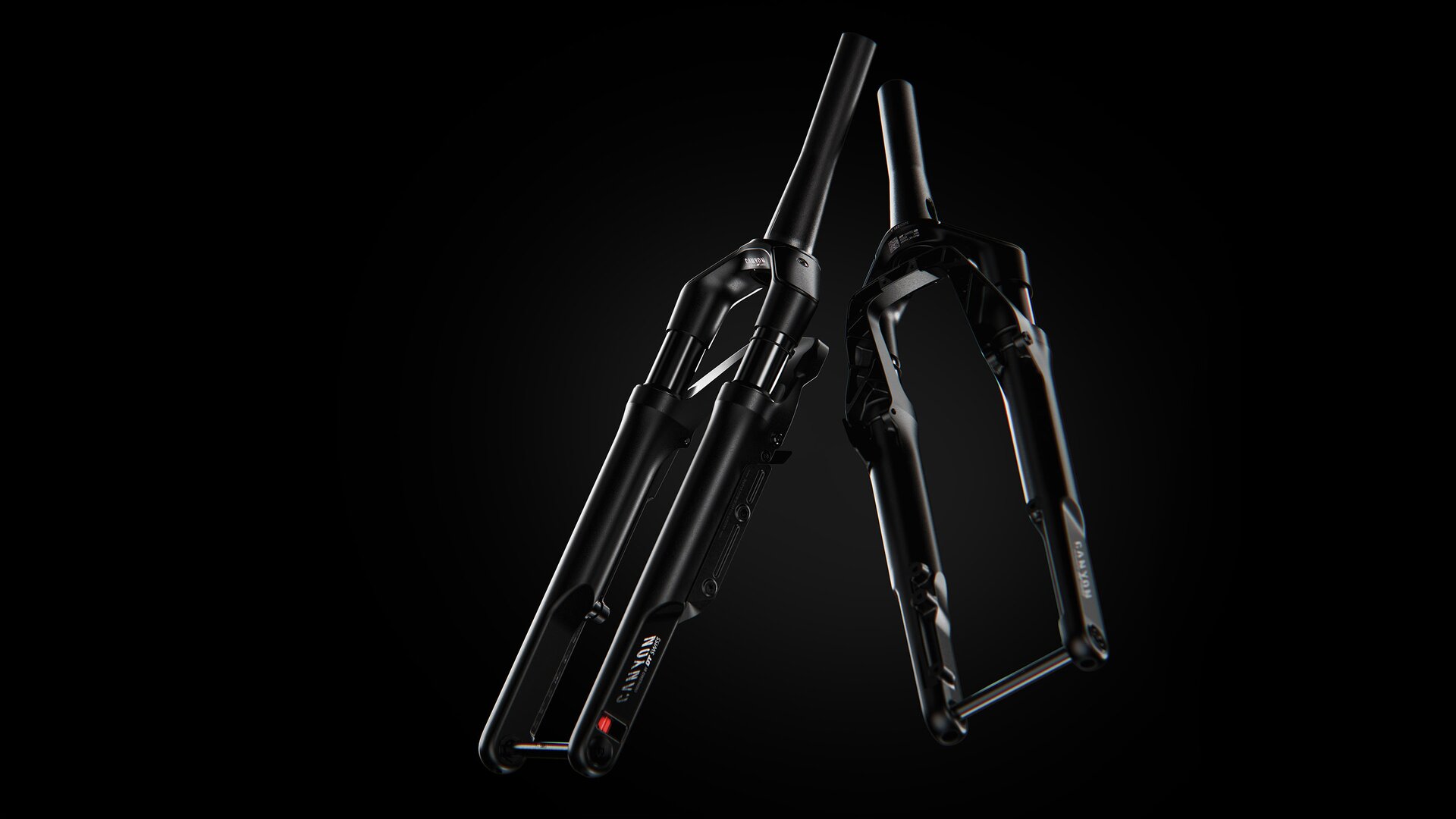
Not for the
rigid minded
Our new gravel fork F 132 ONE
The most groundbreaking innovations are always first met with skepticism. If we listened to the rigid minded, where would we be?
The F 132 ONE, the new DT Swiss fork developed specifically for gravel riding, takes on the rougher sections of gravel races or the uncertainties of your gravel adventure. A single click on the ergonomic PUSHCONTROL remote lever switches from close to open mode, so you can save your body’s energy for your legs. Switch your focus from the challenging terrain to just picking up speed in a gravel race. Mount the bikepacking adapters so you can focus on the journey and extend your gravel adventure.
Leave your rigid fork behind and let the F 132 ONE take care of the bumps in the road – or off it.
PUSHCONTROL Technology
Push to lock, push to unlock. There is nothing else to think about, the focus stays on the hunt for the first step with the patent pending PUSHCONTROL technology. The ergonomic lever can be operated from any hand position on the drop bar so open and lock mode changes can be made quickly and easily. When starting an ascent on an obstacle-free path, this is the time to lock the fork and get out of your saddle to secure the lead. When more obstacles appear, a click on the lever releases the fork, letting it do the work instead of your arms and upper body.

Travel & setup
The F 132 ONE has 40 mm of travel. The fork air spring can be adjusted at the top of the crown by removing the cover and connecting a conventional shock pump. The rebound can be adjusted without tools at the lower leg. To adjust the fork pressure and its rebound damping to the rider weight, simply consult the suspension setup guide.

LINEAIR SL & PLAINGAIN
The LINEAIR spring cartridge with a positive and negative air chamber as well as the PLAINGAIN damping cartridge enable a real capacity to absorb shocks while being as light as possible. In addition to adjusting the air chamber pressure, the fork rebound can be adjusted over a range of 9 clicks using a dial that is easily accessible by hand on the bottom of the lower leg.

Integrated cables
The F 132 ONE is no exception and allows for the complete internal routing of the PUSHCONTROL remote lever actuation cable and half-integrated brake hose routing from steerer tube to crown.

Bike packing adapters
The gravel bike adventure can be brought even further by fixing bags on the bike. The universal mounting adapters can carry up to 3 kg per side, nothing will stand in the way of reaching new destinations.

We know that a suspension fork improves riding comfort, but we wanted to step it up and quantify the real-world efficiency benefits. That's why we carried out so-called roll over tests, where an obstacle was fixed to the ground, which our rider rode over at different speeds and different setups. The purpose of these tests was to determine the ability of the F 132 ONE to reduce the horizontal force acting against the riding direction during an impact. Besides comparing our F 132 ONE to a rigid fork, we wanted to see what role the tire plays in this scenario. The data was recorded using a specific front wheel measurement hub for radial and lateral (horizontal and vertical) loads with a high data resolution. This hub was developed in-house in our Performance Test Center. For these measurements, the hub was used to evaluate the horizontal forces acting on the front wheel axle. The horizontal forces during an impact caused by an obstacle act against the riding direction and are thus intended to be as low as possible.
RESULTS
Rigid fork with 40 mm tires has the highest peak force at 15 km/h and 25 km/h.
A rigid fork combined with 40 mm tires transmits the most force to the system. Compared to the same tire setup with a F 132 ONE fork, the peak is 60 % lower than with a rigid fork with 40 mm tires.
At 15 km/h, the F 132 ONE fork with 40 mm tires achieves the lowest peak force.
This confirms that the F 132 ONE absorbs a large portion of the impact compared to a rigid fork. The peak force for 40 mm tires with the F 132 ONE fork compared to the same tire setup is 63% lower than with a rigid fork, at a speed of 15 km/h. The next best setup at this speed is 50 mm tires.
At 25 km/h, the F 132 ONE fork with 50 mm tires achieves the lowest peak force.
Combining the F 132 ONE fork with larger tires offers the best impact absorption at a speed of 25 km/h. The peak force for 50 mm tires with a F 132 ONE fork compared to the same tire setup but with a rigid fork is 53% lower than with a rigid fork under the same conditions.

Key observations
These measurements were deliberately based on a tangible and illustrative test scenario to make the results as relatable as possible.
- Higher speeds provoke higher peak forces (25km/h vs. 15 km/h)
- Larger tires help to mitigate increasing impacts at higher speeds
- Significant reduction of peak forces with a suspension gravel fork
- F 132 ONE gravel suspension fork remains the most effective solution for reducing peak forces on the hub axle
The highlighted effects depend on many influencing factors such as obstacle height and shape, system weight, tire pressure, speed, fork setup, and more.

Product Support
Looking for manuals, How To videos and spare-parts for your F 132 ONE?
















